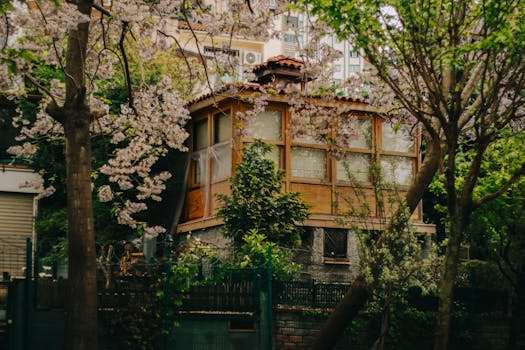
Urban Green Spaces: The Future of Outdoor Living in European Cities by 2025
Urban Green Spaces are becoming increasingly important in European cities as they provide a sustainable and healthy environment for citizens to live and thrive. As we approach 2025, it is essential to understand the role that these spaces will play in shaping the future of outdoor living in European cities.
Introduction to Urban Green Spaces
Urban Green Spaces refer to areas in urban environments that are dedicated to parks, gardens, and other green areas. These spaces are crucial for maintaining ecological balance, mitigating the urban heat island effect, and providing recreational areas for citizens. With the increasing urbanization of European cities, the importance of urban green spaces cannot be overstated.
Benefits of Urban Green Spaces
Urban Green Spaces offer numerous benefits to European cities and their inhabitants. Some of the most significant advantages include:
- Improved air quality: Urban green spaces help to purify the air by absorbing pollutants and producing oxygen.
- Reduced urban heat island effect: Green spaces can reduce the temperature in urban areas by providing shade and cooling the air through evapotranspiration.
- Increased biodiversity: Urban green spaces provide habitats for various plant and animal species, helping to maintain ecological balance.
- Recreational areas: Green spaces offer areas for recreation, relaxation, and socialization, improving the overall quality of life for citizens.
Challenges Facing Urban Green Spaces
Despite the numerous benefits of urban green spaces, there are several challenges that European cities face in maintaining and developing these areas. Some of the most significant challenges include:
- Urbanization and land use: The increasing demand for urban land use can lead to the destruction of green spaces.
- Funding and resources: Maintaining and developing urban green spaces requires significant funding and resources.
- Climate change: Climate change can have a devastating impact on urban green spaces, with increased temperatures and changing precipitation patterns affecting plant and animal species.
The Future of Urban Green Spaces in European Cities
As we approach 2025, it is essential to consider the future of urban green spaces in European cities. Some of the trends and developments that will shape the future of these spaces include:
- Sustainable design: Urban green spaces will be designed with sustainability in mind, incorporating features such as rain gardens, green roofs, and solar-powered lighting.
- Community engagement: Citizens will be increasingly involved in the development and maintenance of urban green spaces, ensuring that these areas meet the needs of the community.
- Technological innovation: Technology will play a significant role in the development and maintenance of urban green spaces, with innovations such as smart irrigation systems and urban forestry management software.
Conclusion
Urban Green Spaces are crucial for maintaining ecological balance, mitigating the urban heat island effect, and providing recreational areas for citizens in European cities. As we approach 2025, it is essential to understand the challenges and opportunities facing these spaces and to develop strategies for their sustainable development and maintenance. By working together, we can ensure that urban green spaces continue to thrive and provide a healthy and sustainable environment for future generations.




